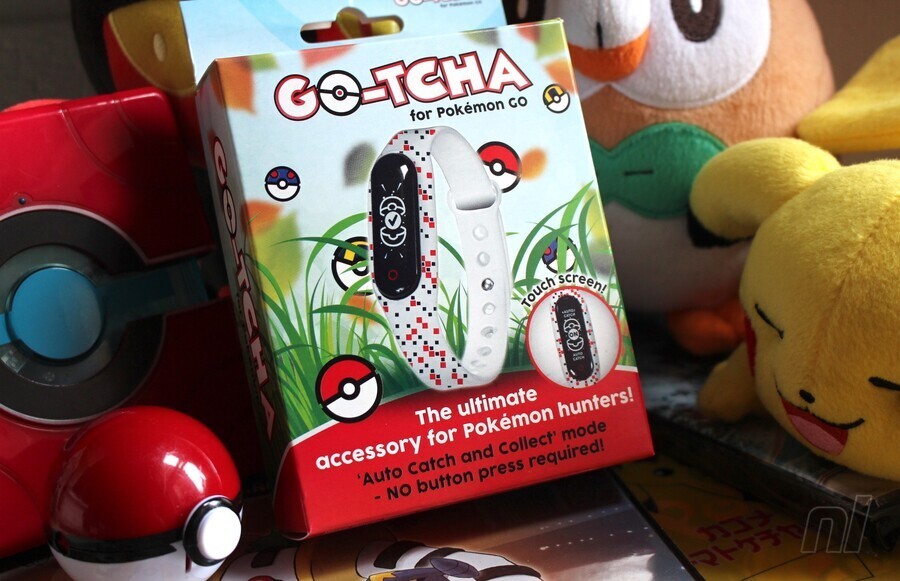
While the Pokémon GO craze has clearly died down after the initial explosion of interest at launch, there are still millions of people who continue to play the game each and every day. Some of these will already be using the excellent Pokémon GO Plus accessory, a device worn on your wrist which flashes whenever a 'mon or Pokéstop is nearby, allowing you to attempt a capture or grab items without having to remove your phone from your pocket.
As we pointed out when we reviewed the GO Plus last year, it's a great device for serious players and we continue to use ours every single day - we dread to think of all the monsters and items we'd have missed out on had we not had the unit with us at all times. The only real drawback of the GO Plus (aside from the fact that it only allows you to use standard Pokéballs when attempting a capture) is the fact that you still have to interact with the unit to get it to do anything. This is obviously a lot better than having to use your phone - especially when you're walking or driving - but it still requires you to constantly push a button every few minutes.
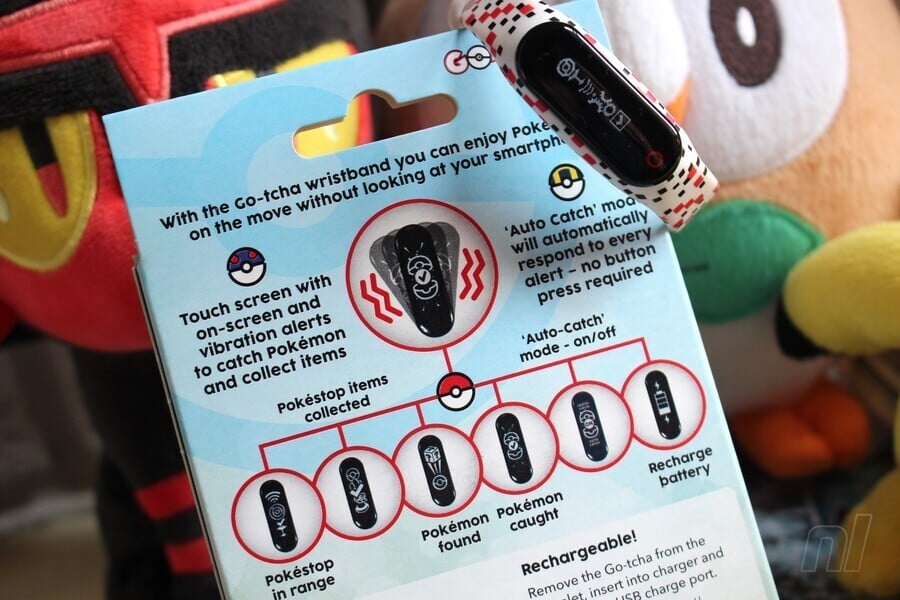
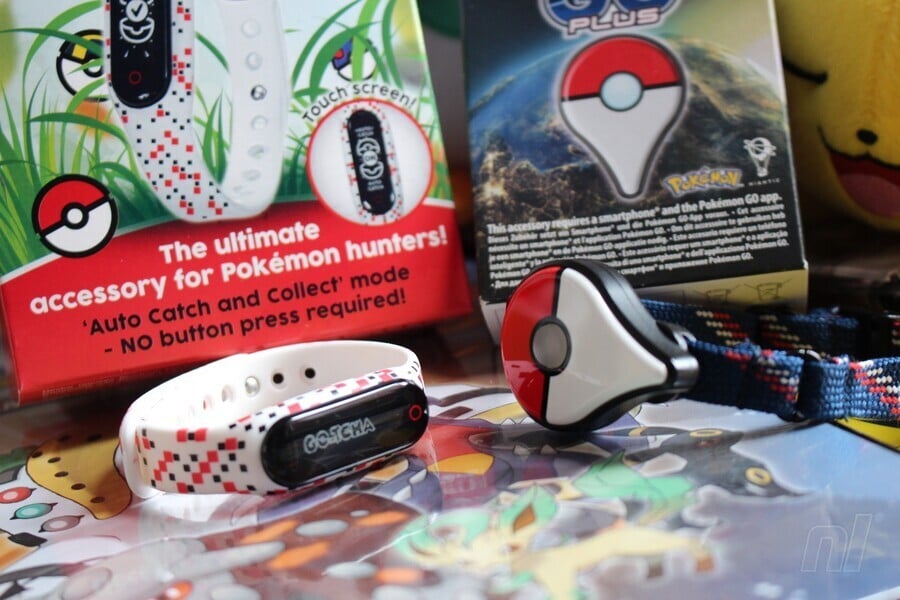
Some inventive players have come up with hacks to totally automate the process, but if you're not keen on performing invasive surgery on your beloved GO Plus then you might want to take a look at Datel's Go-tcha, which costs £29.99 (not including shipping) from CodeJunkies. Shaped like a fitness tracker, this small device imitates the GO Plus perfectly while adding in some neat tricks of its own, such as auto-capture and auto-spinning of Pokéstops. The unit slots into a rubber strap and has to be removed for charging - the internal battery is said to last for eight hours of constant use according to the manufacturer, with a full day of standby time. Charging is handled by the proprietary USB changer, and it takes around an hour to fully charge.
Unlike the GO Plus, which gives you feedback via LED flashes and vibrations, the Go-tcha has an OLED screen on which information can be more clearly displayed. At the bottom of the Go-tcha's screen there's a capacitive button which is used to interact with the device. A single tap will wake it and automatically connect to the app, while subsequent taps will run you through the menu system where you can toggle various settings such as auto-catch, auto-spin, vibration, pairing with your phone and so on. You can also tell the device to only catch Pokémon you don't already have in your Pokédex. To change one of the settings you have to hold your finger down on the capacitive button. It's possible to turn off the automated functions if you so wish and have it operate just like standard GO Plus.
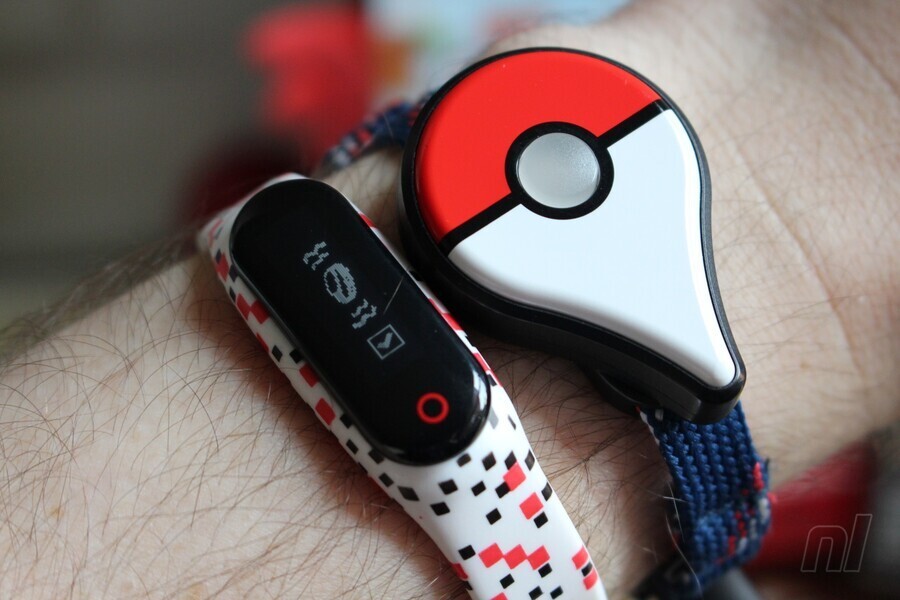
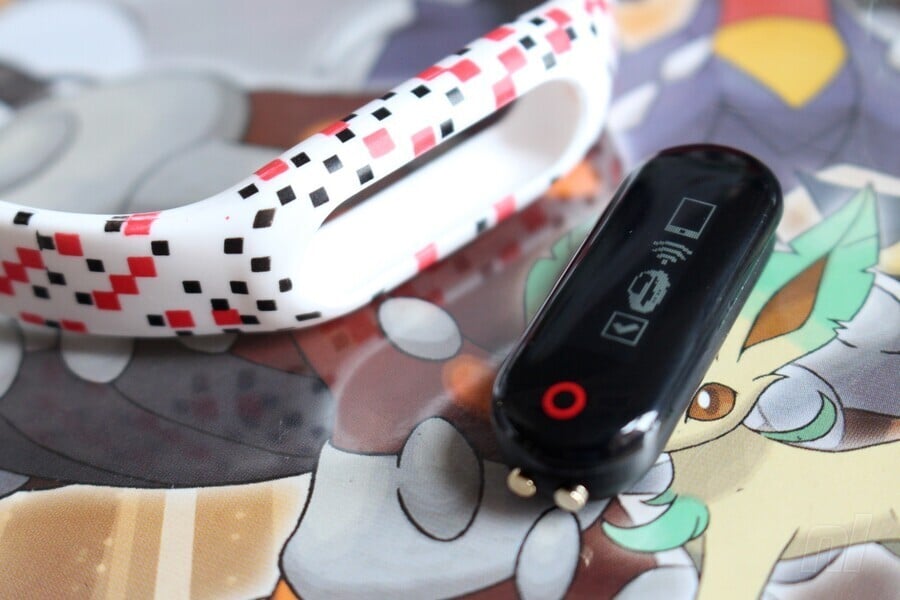
All of these features are great, but a device like this lives or dies by how well it works out in the field. During a solid day of testing, we can confirm that the Go-tcha performed just as well as the GO Plus. The automatic modes all worked perfectly; just like the GO Plus the unit prioritizes 'mon over Pokéstops and is sometimes a bit slow to spin for items, but we have a feeling this is simply how the app works rather than a fault with the unit. Also like the official option, the Go-tcha automatically disconnects from the app after about an hour of usage, irrespective of whether or not you're interacting with it. Again, this appears to be a call by Niantic to save battery life. Sadly the unit's OLED screen is quite hard to see in bright sunlight, which is a shame as it negates one of the big selling points of this device over the GO Plus.
We came away incredibly impressed with the Go-tcha, and it has certainly replaced the GO Plus as our daily travelling companion. Given that the device is totally unofficial, it's fair to ask what kind of long-term future it has; we're sure Nintendo and Niantic won't look too kindly on other manufacturers profiting off the popularity of Pokémon GO and could even take some kind of legal action against Datel regarding the unit. As for whether they can patch out support for the device, we're not convinced it's possible; as far as the Pokémon GO app is concerned, the Go-tcha is a GO Plus. Unless Niantic is able to spot some kind of difference on a hardware level that it can exploit in a future app update to prevent the Go-tcha from connecting then we wouldn't worry too much about this device suddenly becoming useless overnight.
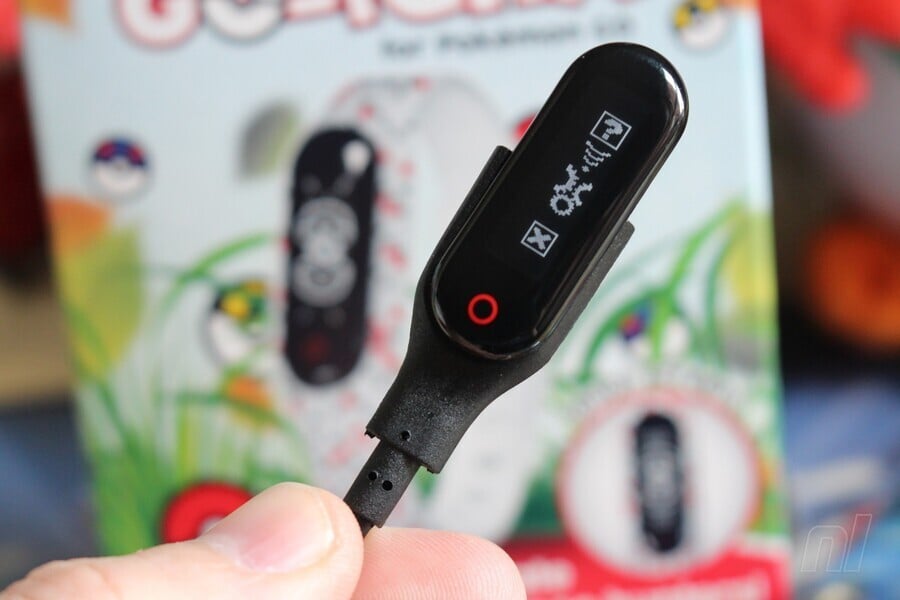
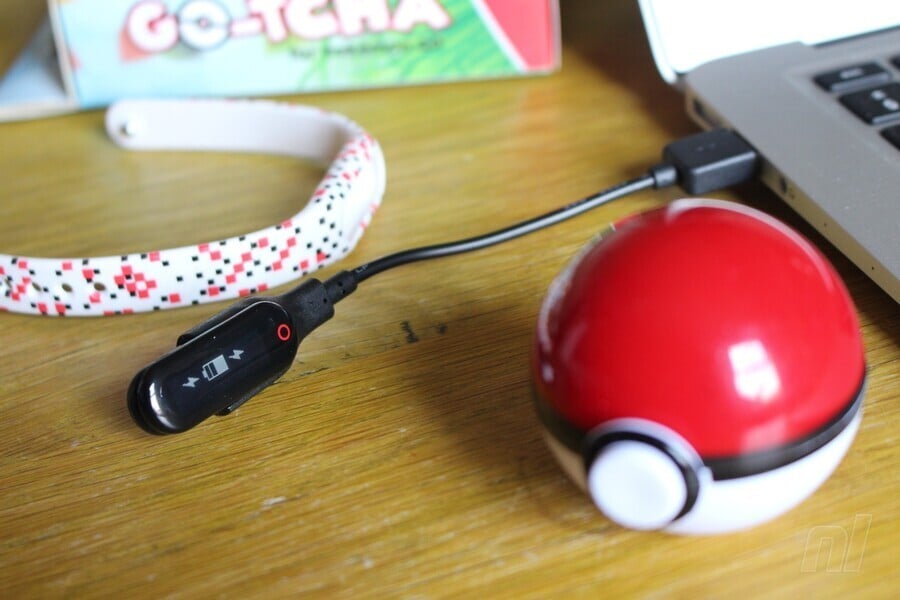
For those of you concerned that using the Go-tcha could lead to your account being banned, we'd also say that's very, very unlikely. As we've just noted, the app "sees" the device as a GO Plus so that would suggest there's no way Niantic can tell if you're using a Go-tcha or the real deal. The automated behaviour of the device is also unlikely to trigger any alarms; if that were the case, then those people using the aforementioned GO Plus hack would have been banned quite some time ago.
The existence of the Go-tcha does throw up one very important debate: if everything is automated then are you really playing Pokémon GO anymore? Given that some people considered the GO Plus to be a challenge-destroying device, the Go-tcha will almost certainly be seen as a greater evil, but the fact of the matter is that Pokémon GO requires an awful lot of grinding and collecting and anything that makes that process easier is going to be seen as a benefit by certain players.
Update: Since we published this review, our Go-tcha died and refused to charge. We've heard similar reports from other users of this happening, so we've changed the score below to reflect this.
Please note that some external links on this page are affiliate links, which means if you click them and make a purchase we may receive a small percentage of the sale. Please read our FTC Disclosure for more information.





Comments 17
One of the key things for me, as a grown man, is that it doesn't look like a freakin' Poke Ball. That stopped me picking up the Go Plus. The fact that this also allows auto-catching/spinning makes it seem like the far superior option. Will probably pick it up at some point.
Only a matter of time before Nintendo and/or Niantic take action against this.
It kinda seems similar to the way Apple Watch plays the game.
Good read, and have to agree with your statement on the 'automated' , not sure I want to buy this to end up not really playing the game anymore?? I already have the go which I have never used anyway so definitely won't be picking this up
Also for people interested the Go-Tcha is the same as the Mi Band 1s so you can replace the crappy plastic strap with more flexible silicon one and get extra charging cables for cheap on eBay.
I've had mine middle of April and the strap had already started to crack around where the unit fits in. So I've now replaced it with a black Mi Band strap and it feels better, grips the go-tcha better while not cracking around the unit.
Please correct me if I'm wrong, but isn't every Pokémon GO Plus connect attempt being 'handshaken' through a series of unique ID's before being succesfully connected and acknoledged by the app's servers?
If that's the case, all Go'tcha's probably share the same dumped PoGo Plus firmware and it'd be relatively easy for Niantic to ban all of them server side including the one PoGo Plus it was dumped from.
@Slaz Where have you read that? I doubt very much it's that complex. Plus, if that were the case, Datel wouldn't have been able to imitate the GO Plus without creating new ID codes for each unit.
I can see this being useful for those times when I miss a pokestop because I'm more focused on the conversation with the person with whom I walking than the pokestops along the walking trail. I tend to keep my phone in my pocket until it vibrates to notify me of a spawn, but sometimes I don't feel it, and it doesn't seem to consistently notify me when passing a pokestop.
@Slaz @Damo if I recall the Go+ only uses two parts of data for connection. 1) Bluetooth ID this is just part of normal Bluetooth operations and is used to identify it as a unique device (Even though like network MAC addresses they are not that unique) and 2) the device identification information/code that informs the device that it is a Go+.
However as Go+ doesn't have any flashable memory so Niantic should not able to provide new firmware, which they would need to do to prevent unofficial devices from connecting.
@dew12333 Niantic don't want you playing the game all the time. They want you walking around seeing what's around you. If you've always got your nose stuck to your phone screen you miss out one life passing around you.
To me Go+ and Go-Tcha are great as I can still be connected to the game while not needing to be on my phone all the time. They also work well for people driving or riding bikes. Of course within the speed restrictions applied by the game.
@Damo @GauBan After looking it up again, I suppose it was this post: https://hackaday.io/project/12680-pokemon-go-plus-diy/log/52137-pokemon-go-plus-reverse-engineering-write-up
I think this confirms that I misremembered it, as the post about the certification process doesn't refer to server side stuff but rather about how the app and smart device establish communication with each other.
Still, I'd be careful buying this device just in case. If I didn't already own a PoGo Plus, I'd have considered it an option though.
@Slaz I got a launch Go+ but still got one. It has replaced my Go+ as a everyday capture-wear. It's great when driving around. I used to use the Go+ attached to my steering-wheel using a rubber band. But this works better as I just get the rumble to let me know something happened.
Both this and the Pokemon Go Plus would be so much more useful to me if there was an option to stop them from disconnecting after an hour. I like to wear mine at work because there is a stop close enough for me to hit and I can't be on my phone. Often when it disconnects I can't pull my phone out to reconnect it and end up going a while till I can. It's nice that they're looking out for my battery life but let me make that decision.
@Damo @DragonEleven Again, Niantic can try to take action but they're unlikely to be successful, legally external devices connecting to a game & altering the code is not breaching copyright (Galoob Toys v. Nintendo) and neither is reverse engineering code/hardware (Atari Games v. Nintendo)... unless Codejunkies has literally stolen Niantic code verbatim, they are likely safe from a legal POV.
As for preventing the Go-tcha from working, it seems they'd need to do that with all Pokémon Go Plus', which would likely cause them more damage in the long run than good. Possibly putting themselves on the receiving end of legal action.
From videos I've watched of the Got-cha, it can't bypass the 1hr desync & is therefore not completely game breaking. Niantic may look into reducing the desync time to slightly counter the "auto catch" usefulness.
Just to confirm, i brought up Atari Games v. Nintendo because the case rested on whether Atari/Tengan had reverse engineered a bypass to Nintendo's NES security or had stolen the code (which they had, literally stealing files from a government office)... it makes it pretty clear that creating security bypasses and accessing an existing game is not in itself illegal, very much the opposite. Niantic would likely have to prove Datel are using completely unaltered/stolen code to win any case against them.
@GauBan I too ordered one from Nintendo's online store when stock got up. I use it several times a week when I'm walking while not wanting to get distracted. I don't want to check my phone all the time when I walk the dog, as I want to spend that walk with the dog! Same for shopping etc, where I like to let the extra KM's count and obtain some items and mons without distractions.
Currently lvl32 and still playing at least once a day, the Go+ sure helped me with that!
@MarcelRguez pretty much every smartphone game is like that.
Show Comments
Leave A Comment
Hold on there, you need to login to post a comment...